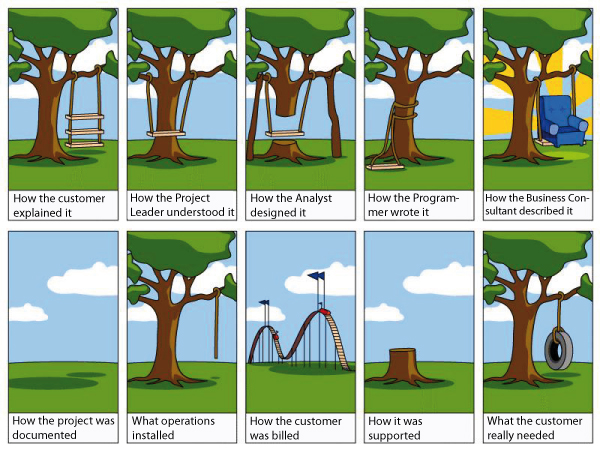1.2.3. User-Centered Design
What is User-Centered Design?
The process from the idea of a project until its realisation and usage, often ends up as following:
 As User Interface Design should not end up (enabled.com)
As User Interface Design should not end up (enabled.com)User Centered-Design helps to avoid that processes end up as it is shown
in the image above.
"User Centered-Design (UCD) is a design philosophy
and a process in which the needs, wants, and limitations of the end user of
an interface or document are given extensive attention at each stage of the
design process. User-centered design can be characterized as a multi-stage
problem solving process that not only requires designers to analyze and
foresee how users are likely to use an interface, but to test the validity
of their assumptions with regards to user behaviour in real world tests with
actual users. Such testing is necessary as it is often very difficult for
the designers of an interface to understand intuitively what a first-time
user of their design experiences, and what each user's learning curve may
look like." (Wikipedia)
User Centered Design concerns itself with:
- Usefulness
Usefulness relates to relevance: do the functions, information, etc. match what the user actually needs? (Katz-Haas 1998) - Usability
Usability relates to ease-of-use - a simple concept, but not always easy or intuitive to implement. (Katz-Haas 1998) - Visual Design
Refers to layout recommendations and to the use of graphical elements.
